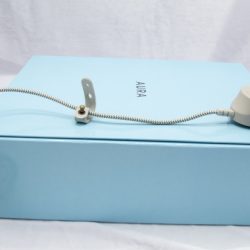

Livestock system has direct interface to NLIS for monitoring.

Farmer requests livestock be purchased through the agent and invoice funded by the livestock financier.Third party livestock agents interact with livestock financiers through a settlement office on the borrower’s behalf, ensuring perfection of security in favour of the financier and that loan funds never touch the borrower’s bank account.Ī typical livestock purchase follows the below process: Key features of livestock finance are the separation of the farmer or SME borrower and the financier. Livestock finance: purchase and funding process Typically, we see effective LVRs decrease from circa 90 per cent at drawdown to circa 60 per cent over the life of a loan assuming stable prices. As animals grow, the livestock financier’s security position improves with the effective loan to value ratio (LVR) decreasing over time. This is an important point to note and differentiates this collateral from many other forms of asset financing where the assets naturally depreciate, such as car loans or business equipment. Livestock naturally increases in value as it grows to its target selling weight. Extreme cases of non-compliance may also lead to criminal prosecution. Failure to record a movement may result in a fine being issued by the relevant State/Territory NLIS authority or the Federal Department of Agriculture. There are significant penalties prohibiting livestock transport agents, meat processors and saleyards from accepting stock that isn’t NLIS tagged and tracked. This allows livestock financiers to track the movement of assets automatically in real time, through integration with the NLIS database.

Whenever livestock are sold or transported, their location and ownership is updated in the NLIS. NLIS is the National Livestock Identification System. In addition, guarantees are taken at both the corporate and director level providing livestock financiers with security over other assets of the SME borrower and directors in their personal capacity in the event of default.Īll livestock in Australia must be tagged with an approved NLIS tag. Livestock Loans are secured against the purchased livestock with rights granted to the financier to enter a property and take possession of livestock. Livestock loans are typically required be repaid within 12 months with cash or sale of the livestock assets, which are a highly liquid form of collateral with weekly livestock sale opportunities. Farmers will allow the livestock to graze and fatten over a typical 7–9-month time frame, increasing in value, before selling the fattened livestock for a profit and settling the underlying loan with the livestock financier. This free’s up the farmer’s capital, enabling the purchase of a greater volume of livestock, expanding the productive capacity of the farming operation. Security is taken over the financed livestock in addition to corporate and personal guarantees over the farming business and its directors in their personal capacity, which often encompasses the land assets of farmers. Livestock financiers, if they deem the loan appropriate, will typically advance a portion of the purchase price of livestock. This is again the case for Australia’s farming SME businesses where traditional bank lending practices are modeled on lending against the land assets of farmers, overlooking alternate security forms, such as livestock.
AURA FRAME TARGET SERIES
Livestock finance: The problem for Australian farmersĪ recurring theme in this series is the banks’ inability to utilise security forms other than property for loans to Australian SMEs, due to prudential regulations that govern the banking system in Australia. This week we will take an in-depth review of Livestock finance. Property (non-development) Backed Finance.The loan and security types which the Aura Private Credit strategies hold exposure to through these vehicles include:

These lenders provide Australian SMEs with specialised funding solutions, utilising securitisation warehouse structures, provided by the Aura Private Credit strategies, as investment vehicles. Last week we commenced a series exploring the different loan and security types of the Aura Private Credit strategies hold exposure to via relationships with non-bank lenders we see as best of breed.


 0 kommentar(er)
0 kommentar(er)
